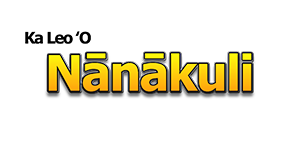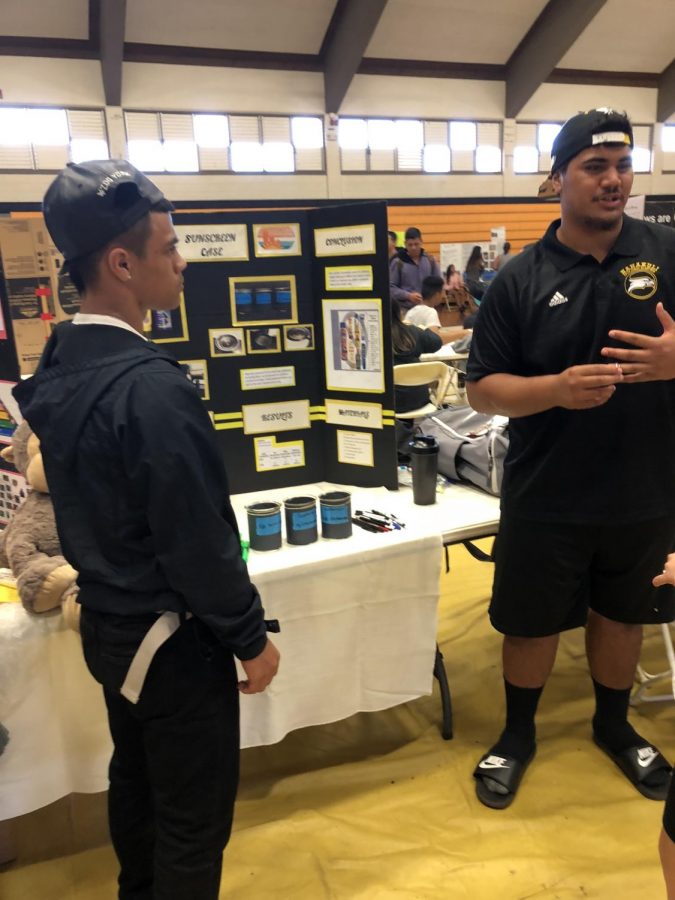Students Work the Heat with S.T.E.A.M. Fair
S.T.E.A.M. (Science, Technology, Engineering, Arts, Mathematics) was an all-day fair for Nanakuli students on January 30, 2018. Students had a chance to exhibit their work of excellence around campus for their career pathway classes. This helped students to gain confidence and an understanding of what career pathway fits best for them as well as give possible Science Fair students a chance to exhibit their work.
Instructional coaches, Kainoa Hopfe and Markus Spidel, organized the 2018 S.T.E.A.M. fair.
“Kainoa’s been working with the Health Fair for years. It’s my first year, and the first year we are doing this S.T.E.A.M. fair. This whole school event, drawing on what we’ve done in the past with the health fair,” said Spidel.
This fair would have originally have been called the S.T.E.M., until a greater vision was introduced—S.T.E.A.M. The difference is the addition of Arts to the S.T.E.M. concepts.
“People at this school heard of STEAM versus STEM and they liked it. They suggested we proposed that, and that’s just what it became,” said Speidel.
Both Hopfe and Speidel felt that something beyond just a project for each student to share within their class was needed.
“This fair is not about, so and so, and who can’t participate. This is about our school fair, and if you’ve got work that you’ve wanted to showcase, this is your fair too,” added Speidel.
The S.T.E.A.M. fair’s ultimate goal was to empower the students of NHIS.
“What I want the students to get away from this, those that are in the fair, that are presenting at their different booths, showing the work that they’ve done, I want them to have that experience of sharing the work their proud of with an audience,” said Speidel.
Nevertheless, the hopes were that students who are not presenting would walk around the fair and enjoy what is being presented, and also that the fair will build interest in S.T.E.A.M. and that students will want to participate in the future.
The day began with 3 different location/stations and grade levels were assigned to each station. The gym housed student exhibits, the cafe housed community presentations, and C-Building had interactive activities related to S.T.E.A.M.; in addition, a special assembly was held in the football stadium.
Many students felt that the S.T.E.A.M. Fair was a very effective and valuable day.
“I feel excited because we got to share our projects and what we do on the inside of our class,” said eighth-grader Carly Lopez.
Others say that S.T.E.A.M Fair is an important event because it prioritizes goals for this school.
“One, this gives everyone an opportunity to see what their other classmates are doing. Second, it makes them have a reason to do better—some of the kids are going to go to science fair this year, so we needed a presentation of sorts, and be able to explain what they did,” said ‘Āina Based Learning Teacher Jewelynn Kirkland.
Some teachers said that the S.T.E.A.M. fair could have been better if it were a little different.
“Well so I could go with the positive twist, the positive side is that it’s nice to have a school-wide focus on something that is academic. On the personal side I am a little less than excited about losing a whole instructional day,” said band teacher Blythe Emler.
“I think it’s a good thing to have an event like this —It’s kind of like a field trip in the school. One of my concerns is that it is so big and there are so many different functions. Its so big that it can even be confusing, especially for teachers,” said ukulele and chorus teacher Randall Vause.
Some students agree that the S.T.E.A.M. fair wasn’t the best, but could improve with more communication.
“Sergeant and Major said that they know about JROTC but the Principal didn’t mention anything about JROTC. I was so upset because I wanted to get up there and let everyone know that JROTC is available,” said Junior Marian Boene.
Community presenters also felt that the S.T.E.A.M. fair was a success.
“It’s really a great event to witness to the different students, all the kinds of technology that’s available from you guys to go to school for and if you’re interested in different fields,” said GIS Analyst from Onyx Christine E. Chaplin.
Along with its benefits, there were some challenges that came up.
“The only thing that I’d say that would be kind of an issue would be engagement, for the kids who aren’t interested, it’s a little bit more difficult, but at least they’re being exposed to it,” said Chaplin.
“Actually really the only challenges that we had come across was getting all of the equipment funded for our project,” said Elisabeth Onekea Auto Tech teacher.
As for the future, there is hope that the S.T.E.A.M. fair will continue.
“It inspires our students to kind of start thinking about their future and life and using the school and skills that are learned to make their life quality for the rest of their life, so they’re not struggling for the rest of their life,” said Hopfe.
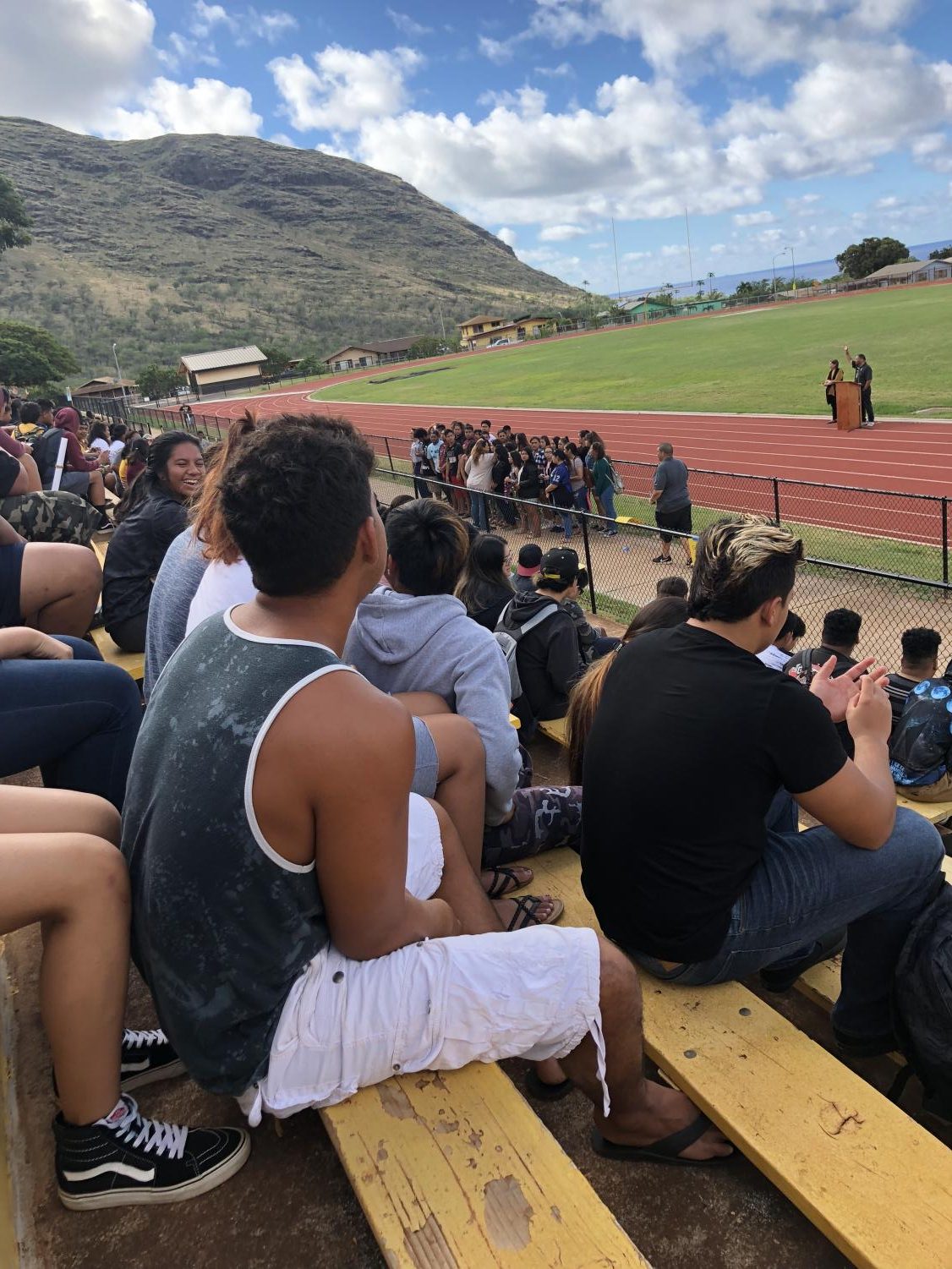
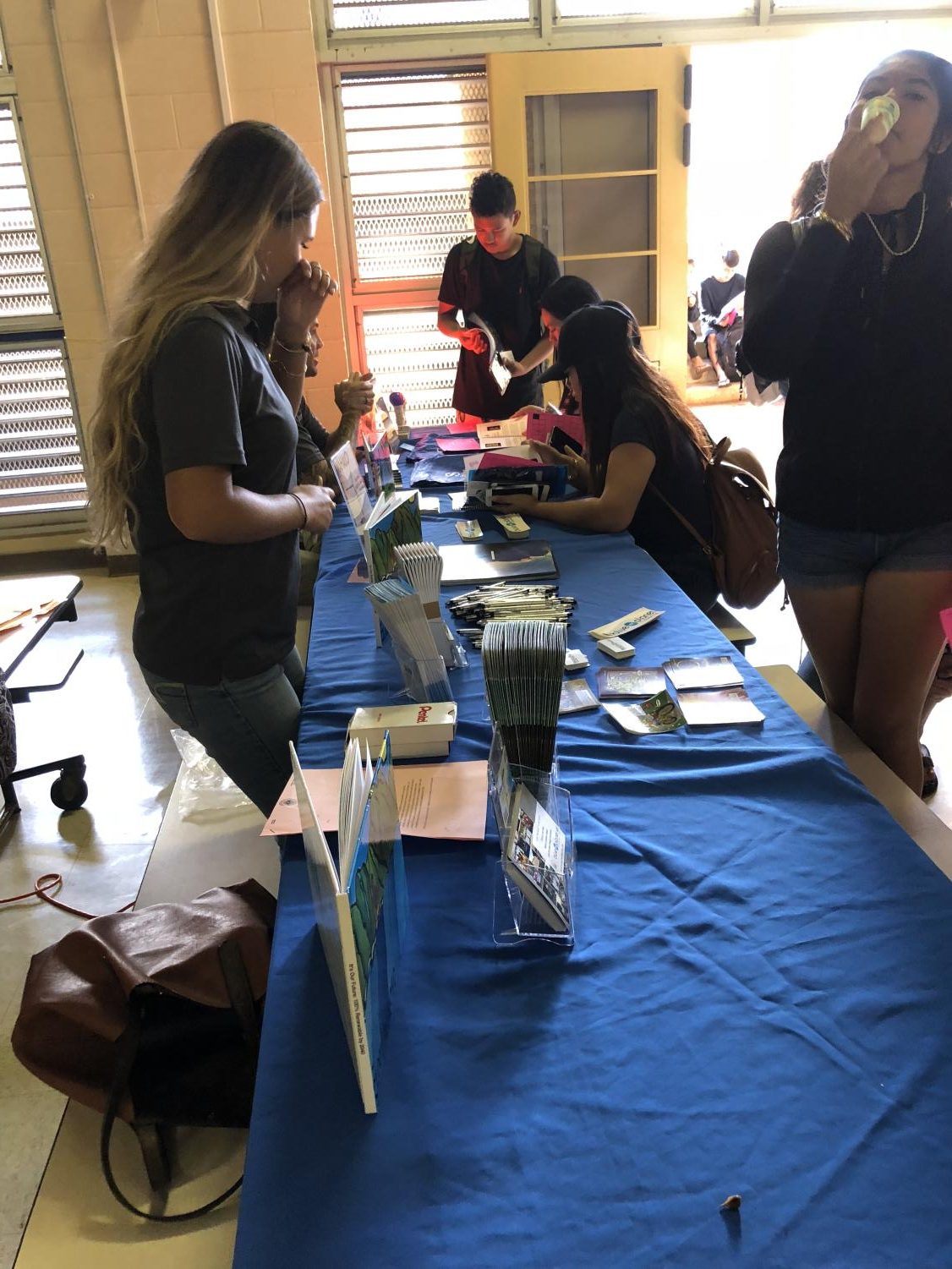

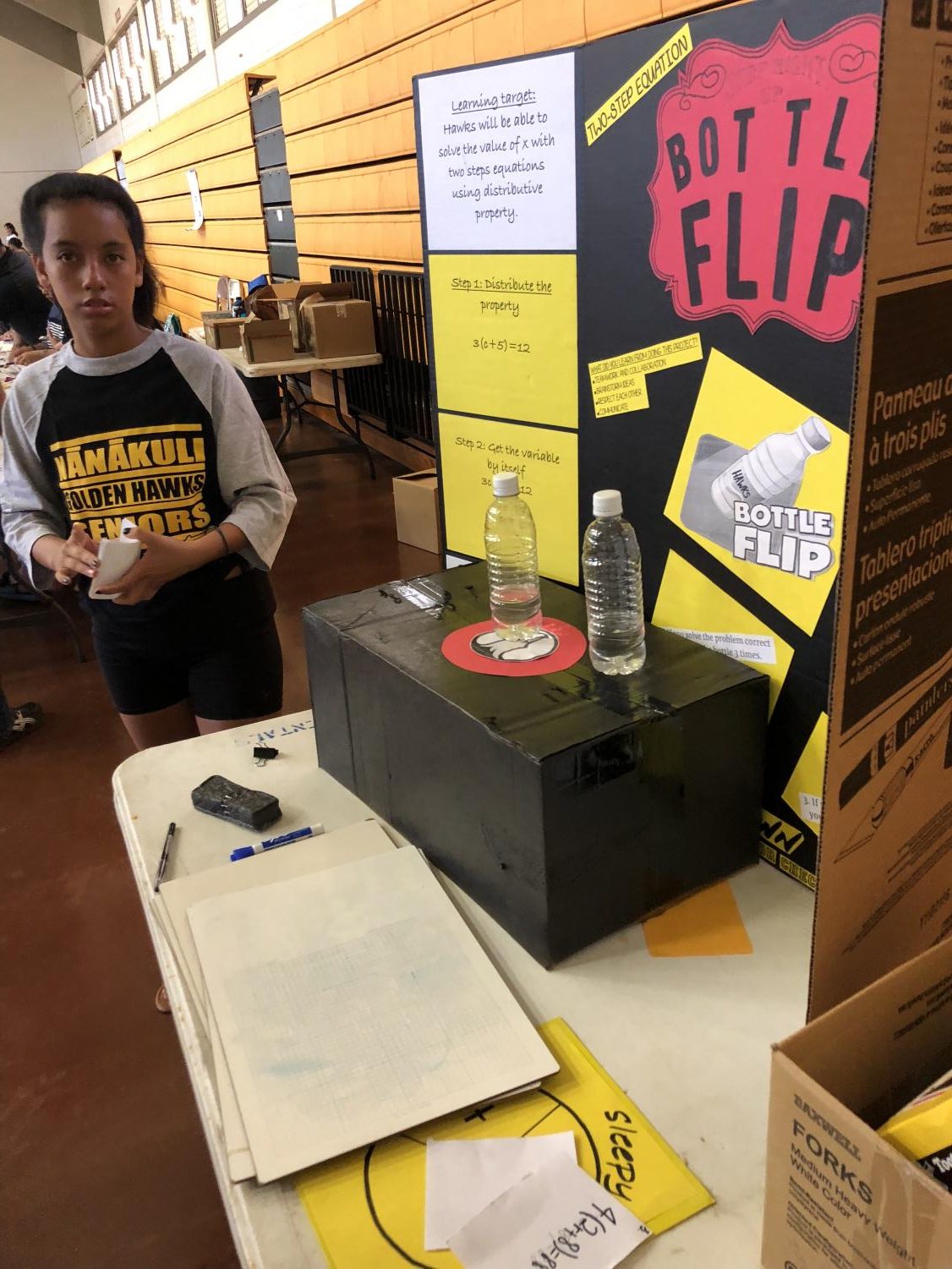
From Hopfe:
Many teachers, students, and workers outside of the Nanakuli Community say we should continue this opportunity, but we wouldn’t have been able to do that without the help of our sponsors, first recognizing our two main ones.
-Native Hawaiian Center of Excellence
As part of the Department of Native Hawaiian Health at the University of Hawaii John A. Burns School of Medicine (JABSOM), NHCOE seeks to improve the health of all Native Hawaiians through education, research, and community partnerships that build the capacity of Native Hawaiian students and faculty to succeed in medicine. The medical students from UH JABSOM have been working side by side with NHIS Health Occupations students to learn skills and explore various careers in the Health field.
-PLACES: Place-based Learning and Community Engagement in School
PLACES is an exciting collaborative venture between school along the Waianae Coast of Oahu, Hawaii, the University of Hawaii, Manoa Office of Student Equity, Excellence & Diversity (SEED), and the local community of Wai’anae and Oahu. The project is funded through the Department of Education, Native Hawaiian Education Program. PLACES supports the planning and implementation of Place-based, Cultural Projects (PBCP) for the children at Nanakuli High and Intermediate School. These projects provide opportunities for NHIS students to engage with the community and develop habits of social activism and environmental stewardship while they simultaneously develop the skills and strategies outlined in Hawaii Content and Performance Standards and The Common Core Standards.
There are also some other sponsors Nanakuli truly appreciates.
Also Community partners that volunteered to demonstrate and present: UH West Oahu, Department of Aquatic Resources, Malama Learning Center, Waianae Coast Comprehensive Health Center, Kahumana Farms, Palehua, Onyx Geographic Information Systems, National Oceanic Atmospheric Association, Hoa ‘Aina, Blue Planet, Ka’ala Farms, Kamehameha Schools- Kilohana Summer Program, UH Pre-STEM Academy, and the U.S. Army & National Guard.


